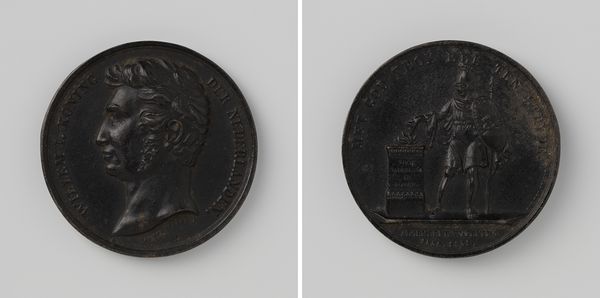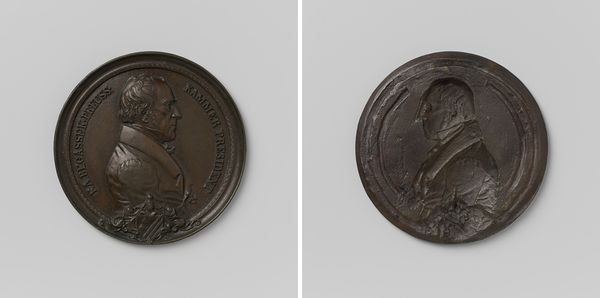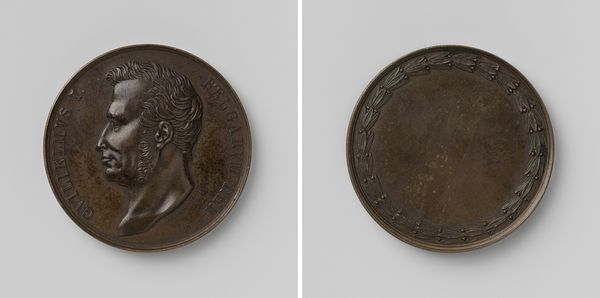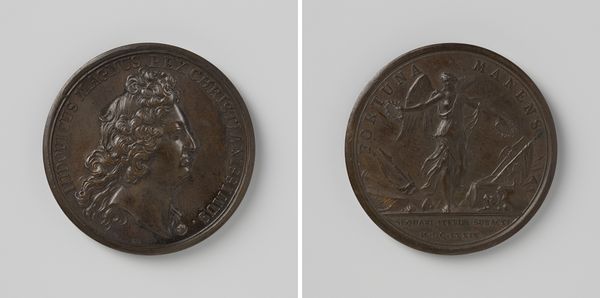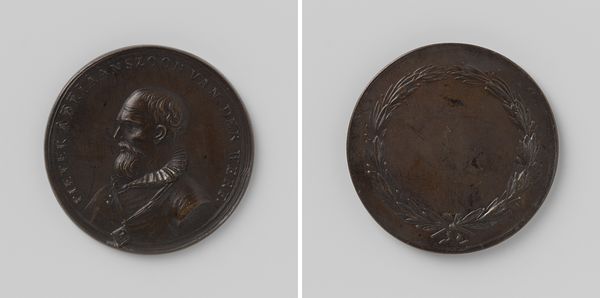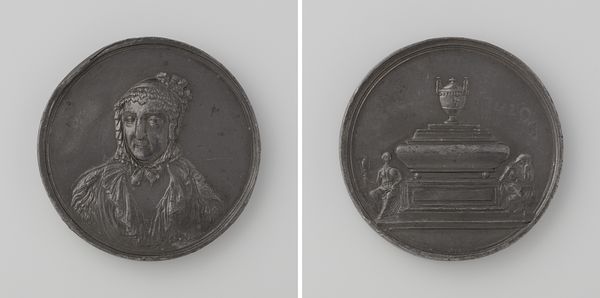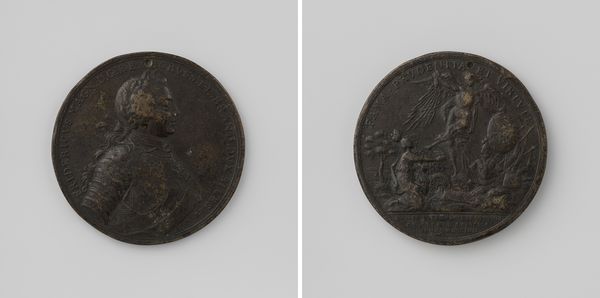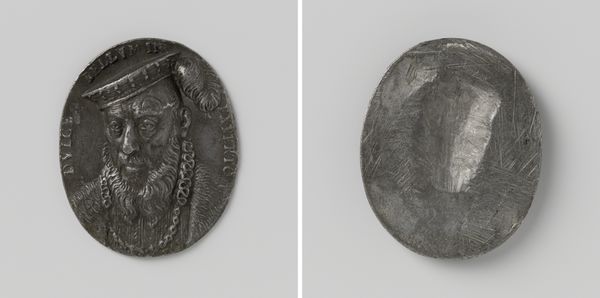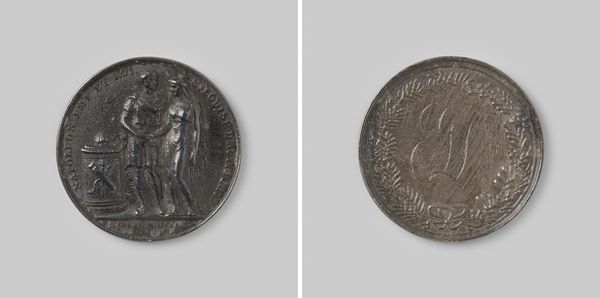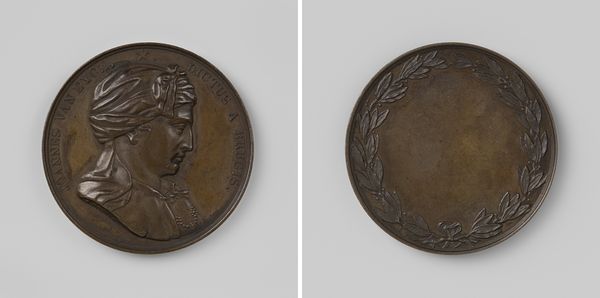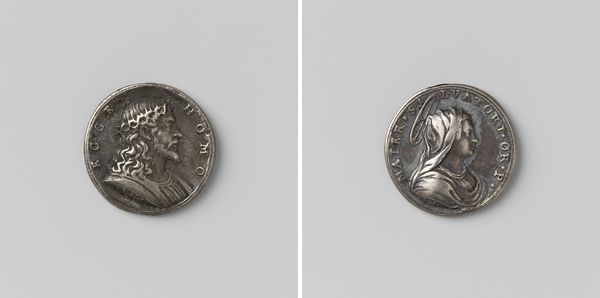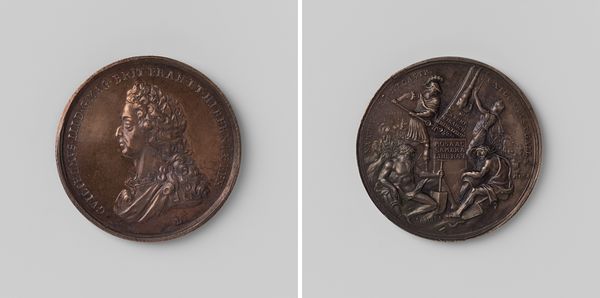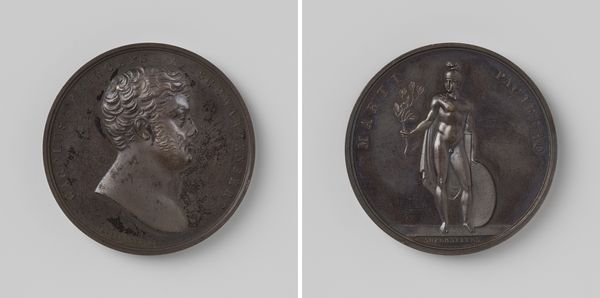
Huwelijk van Frederik, prins der Nederlanden en Louise, prinses van Pruisen te Berlijn 1825
0:00
0:00
leonhardposch
Rijksmuseum
relief, bronze, sculpture
#
portrait
#
neoclacissism
#
sculpture
#
relief
#
bronze
#
sculpture
Dimensions: diameter 8.8 cm, weight 591 gr
Copyright: Rijks Museum: Open Domain
Curator: This artwork is a bronze relief by Leonhard Posch from 1825. Titled "Marriage of Frederick, Prince of the Netherlands, and Louise, Princess of Prussia in Berlin," it is currently housed here at the Rijksmuseum. Editor: My immediate impression is somber. Even in its circular form, there's a severity suggested by the sharp profile and the monochrome bronze. The broken edge feels almost like a deliberate commentary on fragility or perhaps disruption. Curator: Well, the circular form, in particular, is steeped in symbolic resonance. Circular artwork is quite powerful—often representing completeness, eternity, the cycle of life. In marriage portraiture, these forms visually affirmed enduring unions. Editor: Perhaps, but what endures? Monarchical power, perhaps. Arranged unions upheld a very specific social order and very rigid gendered expectations for royal women who were primarily valued for securing lineage. Looking at the portraits of Princess Louise here, her gaze doesn’t appear joyful, it seems she bears a grave obligation. Curator: The artist renders Neoclassical lines in this relief with such precision, mirroring that era’s values of reason, order, and an idealizing perspective. It is also important to recall that such artworks visually codified relationships of state—royal marriages always held crucial political and economic dimensions. Editor: Exactly. Look at the inscriptions circling Princess Louise. Text here situates this work firmly within a historical context of dynastic ambition and privilege. This sculpture feels more like propaganda than celebration of personal love. I’m stuck on those sharp lines, too: they speak less to Neoclassical harmony, and more to an unyielding pressure, for Louise to fulfill her royal duty. Curator: The way Posch captured the delicate texture of Princess Louise’s dress against the cool austerity of bronze certainly generates dynamic tension, embodying societal expectations yet also, a potential for softness to persevere. Symbols in artwork can have multivalent purposes—perhaps also a glimmer of future diplomatic possibilities through marital alliance. Editor: A reminder that power always operates through and on bodies. While one can look to visual signifiers, understanding social structures always reminds me about whose stories and voices remain absent here. Curator: Reflecting on this artwork reveals marriage traditions that bear echoes throughout time—ritualized unions serve diverse societal needs even as individuals navigate these expectations in unique ways. Editor: Exactly, and studying an object like this prompts us to consider what has changed, and what, disturbingly, has not changed about social pressures around gender and marriage.
Comments
No comments
Be the first to comment and join the conversation on the ultimate creative platform.
